Follow me on TwitterRSS Feeds
GuruDaniel
This user hasn't shared any biographical information
Homepage: http://www.thecellularguru.com
Jabber/GTalk: [email protected]
Posts by GuruDaniel
Canadian Carriers Most Profitable In Developed World
Jul 20th
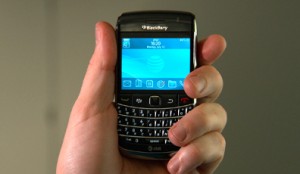 An interest study just emerged confirming what most Canadians already know: their big three carriers are the most profitable in the developed world. According to Bank of America Merrill Lynch, Rogers, Telus and Bell combined for an average of 46.7% profit in the first quarter of this year. Compare that with the UK carriers of 22.6%, which is because of a strong competitive market. Canadians also paid $54.73 US/month on average, also the highest in the developed world.
An interest study just emerged confirming what most Canadians already know: their big three carriers are the most profitable in the developed world. According to Bank of America Merrill Lynch, Rogers, Telus and Bell combined for an average of 46.7% profit in the first quarter of this year. Compare that with the UK carriers of 22.6%, which is because of a strong competitive market. Canadians also paid $54.73 US/month on average, also the highest in the developed world.
Hate to say it, but us Canadians know this without even reading the report. Cell phone cost of ownership, especially with three-year contracts for data and voice, is extremely high. Rogers has often justified their high costs by claiming that to roll out a large-scale 3G network to a country the size of Russia and a population half that of Italy is extremely costly. But how costly, exactly? Consumers in Greece only pay an average of $19.87.
Other interesting stats:
- Canada’s penetration rate is only 69%
- Canada still has the highest rate of landline phone use in the world
- Canadians are the third most talky nation with the average person talking 368 minutes per month
- Korea is second with 374 and the US leads with 814(!!) talk minutes every month
(via CBC News)
Bell To Get HTC Wildfire? Say It Ain’t So!
Jul 19th
Bell, what are you doing? You already have the best low-spec Android phone on the market in the HTC Legend! What’s the point of introducing an even lower-spec Android 2.1 device in the Wildfire? The Legend is $79.95 on a 3-year term, and is almost the perfect marriage of size, power and epic aluminum. The Wildfire is like the stunted, ugly sister to the Legend.
But I digress. They must have a reason for showing the phone in a recent internal document (Act-celerate your Sales. Wow, Bell, can you be any lamer?). And if they do decide to introduce it, perhaps the Wildfire could intro at $0 post-paid, or even be eligible for pre-paid.
The Wildfire has the same 528MHz Qualcomm MSM7225 processor as the HTC Magic which was introduced over two years ago. It’s 3.2″ 320×240 screen is a tad low-res for my tastes, but certainly fits well with the small stature of the phone. It has a decent 384MB RAM, also adequate for the smaller texture sizes that have to be loaded into RAM. It’s topped off with a 5MP camera with LED flash. So clearly the phone has some legs. It’s also cute and small for the ladies.
I do hope it finds a home in some Canadians’ pockets, but Bell should be focusing more on bringing high-end Android devices to these shores. K? Thanks.
(via AndroidGuys)
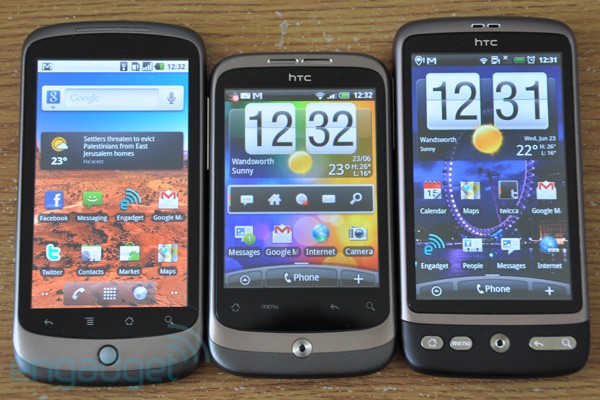
Google’s Nexus One Discontinued. Wherefore Art Thou, Open Android?
Jul 19th
So today the last shipment of Nexus One devices were delivered to Google. Once the inventory runs out, that’s all she wrote for the now-famous direct-buy, no-carrier phone. For its time, the phone’s specs were some of the best ever seen, and really still have not been far eclipsed in the seven months since its online-only release.
The beauty of the Nexus One was in its flexibility and the ease in which it could be hacked to its owner’s content. The open bootrom, in layman’s terms, meant that should you find the stock OS insufficient, a couple lines on a command prompt later you could potentially load any number of user-designed OS’s based on Google’s AOSP (Android Open Source Project). One of the more famous ones now is CyanogenMOD, which is a group project to bring many custom improvements, both visual and performance-wise, to the platform.
The business model was not without its detractors, however. To purchase the phone was to buy it outright (except through T-Mobile): it came unlocked for any carrier, you just chose the radio inside the phone (for T-Mobile/WIND or AT&T/Rogers/Bell/Telus). For $529, this was not the cheapest option, but the fact that there was no contract that needed to be signed. In a sense, the phone, once purchased, was about as free and open as you could possibly imagine.
But the experiment didn’t work: Apple sold millions of iPhones in the time that Google sold only 135,000 Nexus One devices. Perhaps people in the United States just weren’t comfortable buying a phone outright; their allegiances to the subsidized carrier prices were too strong. And what’s a two-year contract in the long run? For me, it’s two years too long.
So now what? What happens to open Android? Where does one go to get his hackable Froyo? For all we’ve heard about Motorola making it practically impossible to hack its new Droid X phone, the move seems to be away from the open concept of Android and into the OEM-controlled UI changes and awful pre-loaded junkware of AT&T and Verizon. When we purchase a phone, we should have the right to remove programs we don’t want and don’t need. But the carriers feel that with their subsidies they have the right to lock down the devices we buy. It’s ludicrous.
So the Nexus One may go down as a failure in Google’s pocketbooks. But the community that has derived from its open nature is far more important. Thousands of people band together on forums like XDA-Developers to try and crack the problems that Google couldn’t. No 720p video recording? No problem. Battery life getting you down? Install a custom Linux kernel. It’s all possible with the Nexus One, and my fear is that in the future Google will be too scared to pursue the same results with a different phone.
The Nexus One will still be sold via Vodafone in Europe, KT in South Korea, and perhaps some other vendors. But when the inventory runs out on Google.com/phone, it will be the end of an era. I don’t think we have to worry about the success of Android as a platform: the Droid X and Droid Incredible are still out-selling most other smartphones in the US, and Android was the only platform to gain users in the Feb-May time period. But for open Android, it’s a different story.
(via ReadWriteWeb)

Will the Droid be Motorola’s last hackable phone?
Jul 16th
Here comes the cavalry. According to a leaked doc from the Droid-Life forums, the first and perhaps only moddable Motorola Verizon handset is going bye-bye. If that is true, and as a result the phone is discontinued to make way for the Droid 2, it is likely that the Droid will become somewhat of a collector’s item amongst Verizon users looking to mod their devices.
Though, in reality, if you haven’t picked up a Droid yet, you probably never will. Since the Droid X was released yesterday, and is much more appropriately named, I feel like most people won’t miss the device too much.
There is a possibility, however, that Google would have asked Motorola not to lock down the bootloader on the Droid 2 as well. But since the direction Motorola is going seems to be once of draconian eFuse domination, I doubt that’s going to actually happen. But what of the legacy of the Droid? It’s important to know that Motorola has vigilantly prevented users from hacking their phones, encrypting the bootloader and threatening to brick the phone if the user tries to mess with it. While the eFuse technology is not confirmed to actually brick the phone, the momentum has already left Motorola getting defensive. They’ve already claimed that if you want to buy a hackable phone, get it from another manufacturer.
I like Motorola’s phones. I think they make good hardware and they don’t try to screw up the user experience too much. There is something to be said for a company that learns from its mistakes. But this bootloader issue doesn’t seem to be a mistake. It’s a calculated business decision, and it doesn’t seem to be going anywhere. I am disappointed in the company, though not really surprised.
Let’s hope Google coerces Motorola to keep the bootloader hackable on the Droid 2. I don’t think it will happen, but it’s been a hot summer and magic may still strike.
No, Windows Phone 7 won’t tear you away from your smartphone, unless it’s an Android
Jul 15th
Ok, so the poll results aren’t exactly going to turn a lot of heads here. I mean, most people haven’t even seen a Windows Phone 7 device in person, and to truly appreciate a new phone platform it needs to be used. Couple that with the fact that Windows Mobile has left a legacy of green ooze on Microsoft’s lap, it’s going to be hard to rebound quickly. I’m impressed that 14% of people are even willing to give the platform a try.
Personally, I think Android users are going to be the ones most likely to switch over. Their allegiances aren’t as strong, the Koolaid not as potent as with iPhone. And BlackBerry users are always going to be BlackBerry users. CrackBerry is the strongest narcotic known to man.
But things change. Come October, or November, or whenever, Windows Phone 7 might blow everyone away with the most robust and usable 1.0 software ever released on a mobile platform. People may say, “Wow! Look at the potential for this thing! I must be an early adopter.” What’s more likely is that most early adopters will breach the Zune/Xbox/Office integration, its potential app marketplace, and all other areas in which it can improve. The Metro interface looks sexy, its consistent UI deployment unbeatable.
All that’s left, really, is the hardware. We know that LG and HTC will be diving head first into manufacturing. We know that, at minimum, the hardware will be as or more powerful than current high-end Android devices. That’s important, as a minimum 4″ screen is going to need some robust hardware. If the internet experience is as good as they claim, and if multimedia support is there, I don’t see why WP7 will be any less desirable than Android or iPhone. But we’ve seen a pretty good platform in WebOS go down the toilet due to lack of hardware/carrier support. Microsoft can’t and won’t let that happen.
BlackBerry Accessory Review: Otterbox Commuter Case for Bold 9700
Jul 15th
The BlackBerry 9700 is a thin phone. I find it to be largely the most comfortable, pocketable phone currently on the market. Yes, there are more powerful devices out there: the iPhone 4 has recently become the de facto leader in industrial build quality and design.
So I prefer to wear the 9700 naked. I have tried a lot of cases for the phone, and none have really kept the phone slim and usable enough to justify the added weight. The Otterbox Commuter case for the Bold 9700 is about the best combination of strength, durability and good looks that I’ve found for the eponymous BlackBerry device.
The case, like all Otterbox Commuter and Defender series cases, is split into three parts: the screen protector, the silicon surrounding and the hard shell. The silicon usually covers the entire housing while the shell slips over it and protects the more important areas of the phone.
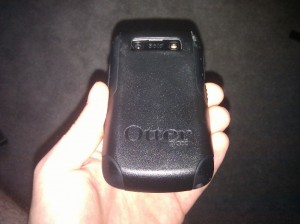 The Bold 9700 version is particularly well suited for this purpose as the phone itself is not exactly made to be dropped. There is a saying in the industry: “It’s a good thing BlackBerrys are easy to replace, because their quality control sucks.” This is particularly true about the newer devices. It seems that ever since RIM moved their manufacturing process to China, the quality of their devices has decreased. The trackpads wobble, the battery covers slip off, the side buttons creak. It’s just not what it used to be.
The Bold 9700 version is particularly well suited for this purpose as the phone itself is not exactly made to be dropped. There is a saying in the industry: “It’s a good thing BlackBerrys are easy to replace, because their quality control sucks.” This is particularly true about the newer devices. It seems that ever since RIM moved their manufacturing process to China, the quality of their devices has decreased. The trackpads wobble, the battery covers slip off, the side buttons creak. It’s just not what it used to be.
And most BlackBerry users tend to use those colourful silicone slip-ons. Those are not only ugly, but when dropped from a fair distance, are not going to sufficiently protect the device. The Otterbox Commuter case adds a fair amount of weight and thickness to the phone, but because it’s pretty thin as it is, it doesn’t reduce the pocketability.
The quality of the materials is top notch. The silicone is flexible and sturdy; never once have I seen any of the flaps on the movable parts of the silicone tear or break. As well, the plastic shell is lightweight and extremely precise. I do have some issues, however, with the fact that because the silicone piece includes flaps that cover the various holes, including the headphone jack and charging jack, it emcumbers easy entry. When removing the flap from the headphone jack, for example, it often involves using two hands to pry it from inside the hole itself, and getting the headphone into the jack involves holding the flap back while you try to maneuver it in over the excess silicone. There’s almost too much of a good thing. I don’t feel these flaps are necessary, and often cause undue frustration when inserting the charging cable at the end of a long day.
A benefit, however, to having the hard shell on the phone is the slightly extra width it gives the phone when holding it to type. As most Bold 9700 owners know, the phone is narrower than its predecessor, the luxuriously-sized Bold 9000. As a result, the keyboard had to be narrowed too. The Commuter case actually widens the phone by a couple millimetres, allowing you to hold it and type more comfortably with your thumbs. Probably not an intended benefit by Otterbox, but certainly welcome if you’re longing for those Bold 9000 days.
Overall I would recommend the Otterbox Commuter case for anyone who’s ever dropped his phone or missed her Bold 9000. You’re going to feel a lot safer with it on.
The Otterbox Commuter case for Bold 9700 is available for $34.99 on their website or at many affiliate retailers.
Pros:
- Great manufacturing quality
- Three-part system, includes screen protector
- Makes phone very durable
- Widens phone slightly for more comfortable thumb typing
Cons:
- May add too much bulk for some people
- Charging and headphone holes are too difficult to open
- Screen protector is of questionable quality and value
Is the iPhone 4 really defective or is it just AT&T?
Jul 13th
When Rogers launched the iPhone 3G in July of 2008 their network must have been beaten to a pulp. They were the only network in Canada with iPhone for over a year, and until Bell and Telus launched their HSPA+ network in late 2009, Rogers seemed poised for a network over-extension. Recently Toronto saw Rogers’ network crack under the weight of the Pride Parade and a million visitors descending on the downtown core. It was not a good day for the network, and I have no doubt that Americans feel similarly perturbed on a daily basis when waking with AT&T’s spotty service.
But where we’ve heard the most chatter from iPhone 4 users about reception problems is in the US. A country with a network problem as it stands. Rogers rarely has signal degradation on their 3G network, and it will be interesting to see how the carrier handles the extra load when thousands of people inevitably sign up new contracts for the iPhone 4.
Suffice it to say, the antenna design was not an afterthought. If AT&T had a better network with a more pervasive 3G signal, this would be a non-issue. Merely covering the antenna does not always end in dropped calls and signal degradation, but when the signal is already low, it may lower it to a breaking point. There is a distinct difference between a design flaw and a co-dependance problem. Apple relies on its carriers to supply the data routing and signal availability. AT&T may have over-promised when they renegotiated with Apple to continue their exclusivity contract. No one really knows at this point. What we do know is that Apple is taking a lot of heat for this problem, and they may not be the right giant corporation to be pointing fingers at.
Then again, maybe they are.
As of today, the share price has taken quite a beating, losing about $9 billion in market share. That is peanuts in the scheme if things for Apple, but try to remember the last time the company was in hot water for one of their products? Doesn’t happen too often. I am no fanboy, and I hope the company learns a lot of lessons from this debacle, but let’s be clear here. A lot of engineers have claimed that the antenna, when receiving a strong signal, is actually much better than any previous iPhones. This is a fact. The fiction is the “improvements” AT&T seems to be making to their network.
Facts? Facts don’t sell phones.
Price Drops Coming For Rogers Android Handsets
Jul 12th
Rogers is usually pretty competitively priced with their phones. They can have such large subsidies because in Canada, with three-year contracts, they are guaranteed a certain amount of revenue per customer. And Rogers’ monthly charges, especially for a smartphone, are not cheap.
So a few handsets are coming down in price, and while none are earth-shattering, they bring the devices down to a certain level where, when the iPhone 4 arrives, they will still be attractively and competitively priced.
![]() Firstly, the Sony Ericsson Xperia X10 is coming down in price from $149.99 to $99.99. This is a very nice Android handset that has just received a nice little upgrade to improve performance and battery life, though in reality if it’s not Android 2.1 no one really wants it.
Firstly, the Sony Ericsson Xperia X10 is coming down in price from $149.99 to $99.99. This is a very nice Android handset that has just received a nice little upgrade to improve performance and battery life, though in reality if it’s not Android 2.1 no one really wants it.
The Motorola QUENCH and Acer Liquid e are both coming down from $49.99 to $29.99. These are capable phones, but I would take the Acer over the QUENCH, since the specs are much better and the screen is gorgeous, and it currently runs Android 2.1 while the QUENCH runs Android 1.5 on top of Motorola’s MOTOBLUR skin, which is great for quick messaging and terrible for everything else.
The long-in-the-tooth Samsung Galaxy Spica is coming down from $29.99 to $9.99. This is also a nice phone, great specs and is very hardy, but is still running Android 1.5! So the faster this phone gets off the market, the better for Android fragmentation.
![]() And lastly, the brand-newly launched Samsung Wave is already receiving a price cut, from $99.99 to $79.99. This phone runs on Samsung’s own bada OS, and has not really been proven to give any advantage over existing platforms. Read my editorial on why the Wave will likely flop in Canada (and elsewhere).
And lastly, the brand-newly launched Samsung Wave is already receiving a price cut, from $99.99 to $79.99. This phone runs on Samsung’s own bada OS, and has not really been proven to give any advantage over existing platforms. Read my editorial on why the Wave will likely flop in Canada (and elsewhere).
Remember, all these prices are for new customers who sign a three-year contract. So take that into account when buying a phone you are likely going to spend a lot of time with over the next three years.
iPhone 4 FaceTime Ad Makes Me Believe in Love Again
Jul 12th
Look, I’ve been burned many times. So have you, most likely — we all have. There is nothing like mopping up the blood from a fresh breakup (not real, I hope) and trying to move on with your life.
And one of the hardest things to see when you’re single and alone is the adorable, saccharine, kill-me-now love of another couple, right in your grill.
But of the four new FaceTime ads by Apple, all of which appeal not to the technology’s uniqueness or brilliance, but rather to its ability to forge greater emotional bonds between people, there is one in particular that I like. It’s the one where the girl shows off her new “pixi” haircut to her boyfriend who says he likes it, but in reality, not so much (see it embedded above).
The ad is brilliant, not only for showing off one type of conversation we as users of FaceTime hope to eventually have on our iPhones, (and who wouldn’t want to be young, white, and good looking?) but for the first time, even if the person is down the street, we are accountable for our faces over the phone. And that is a huge problem.
I cannot tell you how many fights I had with my ex-girlfriend over BlackBerry Messenger. BBM is a cesspool of vague intent and half-formed emotions. You can’t see the person’s face; you can’t hear his or her voice, so it becomes, at times, a guessing game, and you engage, as a result, in lots of self-doubt.
Now, IMing is unlikely to decline because of the advent of FaceTime. Even if everyone in the world had an iPhone 4 right now, the feature will likely only be used on specific occasions, where you don’t mind your face to be seen. But if you’re a romantic guy, and I would like to believe I am, there is nothing better than showing your girl that you’re giving her your full attention. How many times have you been caught with the, “are you typing right now?” as your significant other overhears the key presses and senses your lack of full attention. FaceTime should, and likely will, be a relationship test of sorts. Guys with attention span deficits; those who like to roam the net during a nightly conversation; or those trying to mask his location have no excuse anymore. Sure, at the moment FaceTime is WiFi only, so lack of WiFi signal is still a valid excuse. But give it time and Apple will allow its use over 3G, and guys are going to have to start behaving themselves, or FaceTime might just reveal them to be somewhere they’re not supposed to be.
I’m no cynic, only a realist. On the other hand, FaceTime is a lover’s dream. There are dirty things one can do with the technology that, I’m sure, companies are already hard at work producing. But there are other uses that are equally as exciting, and not X-rated. The above ad is just one of the many ways a couple can communicate using FaceTime to hopefully strengthen their relationship by speaking and acting like they would if they were in the same room, wherever in the world they are. It’s an exciting, and possibly scary notion, especially for those men who don’t like to open up, and those that don’t lie very well.
What do you guys think of the latest batch of Apple ads?
HTC Evo or Incredible Being Ported To GSM?
Jul 10th
Everyone knows about the Droid Incredible on Verizon and the HTC Evo on Sprint, and how, because they both run on CDMA-spec networks, they are incompatible with any other network. Contrast this to, for example, a Nexus One, which out of the box comes unlocked and compatible with multiple GSM carriers around the world (in two versions, however) as long as the radio bands are compatible. That means that if one should need to travel overseas, his or her Nexus One (or any other GSM-compatible device; I am just using the N1 as an example) should work to make phone calls and send text messages on a local network, as long as one buys a SIM card.
Up in Canada, we have are in an Android drought. Sure, the HTC Desire is coming to Telus shortly and the HTC Legend was just released on Bell, but it is unlikely that any Evo or Incredible-like devices are going to make their way up north any time soon. Canada’s carriers are phasing out their CDMA infrustructure, and it seems that the two aforementioned CDMA devices are US-exclusive.
So what happens when HTC decides to take those designs and port them over to make them GSM compatible? They could potentially go to a lot more places around the world. Sure, the EVO 4G will likely just be an HSPA device, but the world could use more Android handsets, period. According to Pocket-Lint, one of their tipsters mentioned that an HTC device, code named “Ace,” is going to be released later in the year in the UK, and has a striking similarity to the HTC HD2 (a sexy, Sense-covered Windows Mobile 6.5 device). Whether this is going to be a strict port of the Incredible or EVO, or a unique device altogether, we don’t know, but if it’s released in the UK, a Canadian/South American/European release can’t be too far off.
One has to wonder whether, by the time these ports are completed and released, the high-end specs (1GHZ Snapdragon 512MB RAM, etc.) will seem a bit antiquated. Newer dual-core Snapdragon processors are being released later in the year, and HTC surely has them already planned for devices. Personally, I’d like to see the EVO ported to GSM to run on Bell or Telus’ new HSPA+ network. That would be hot.
(Pocket-lint)


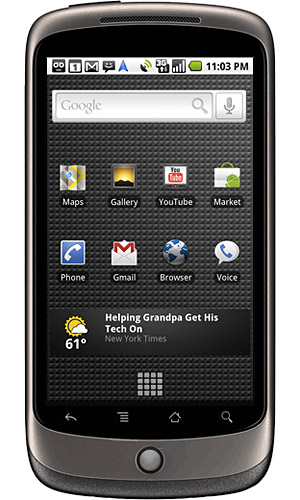
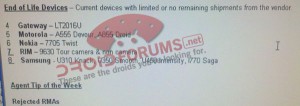
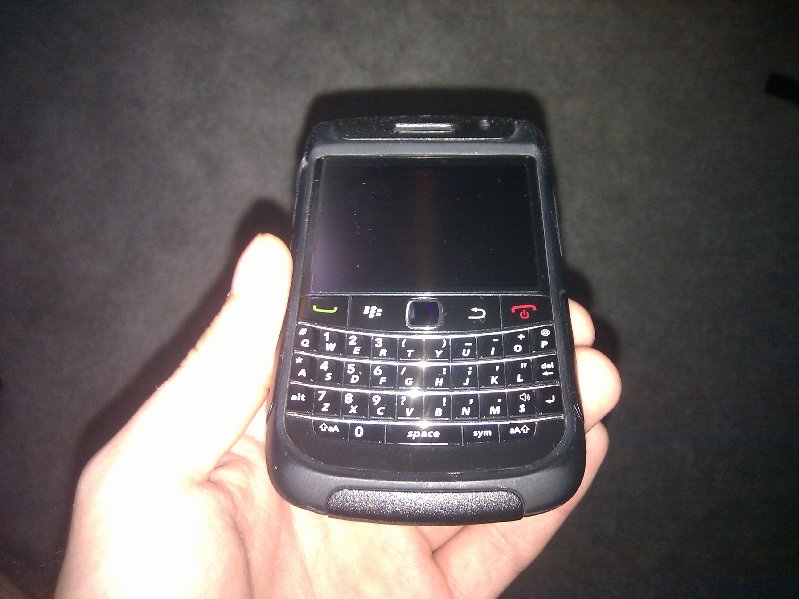
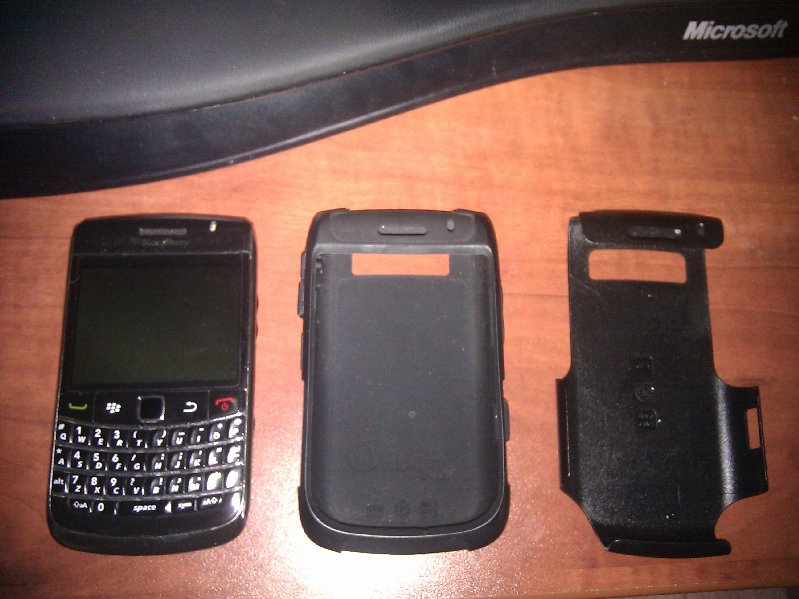
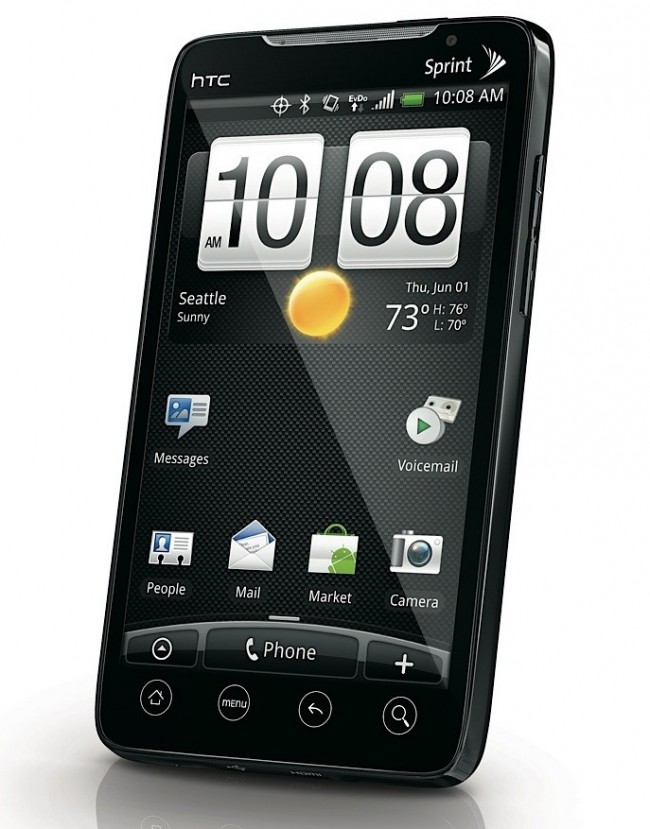





Interact With Us